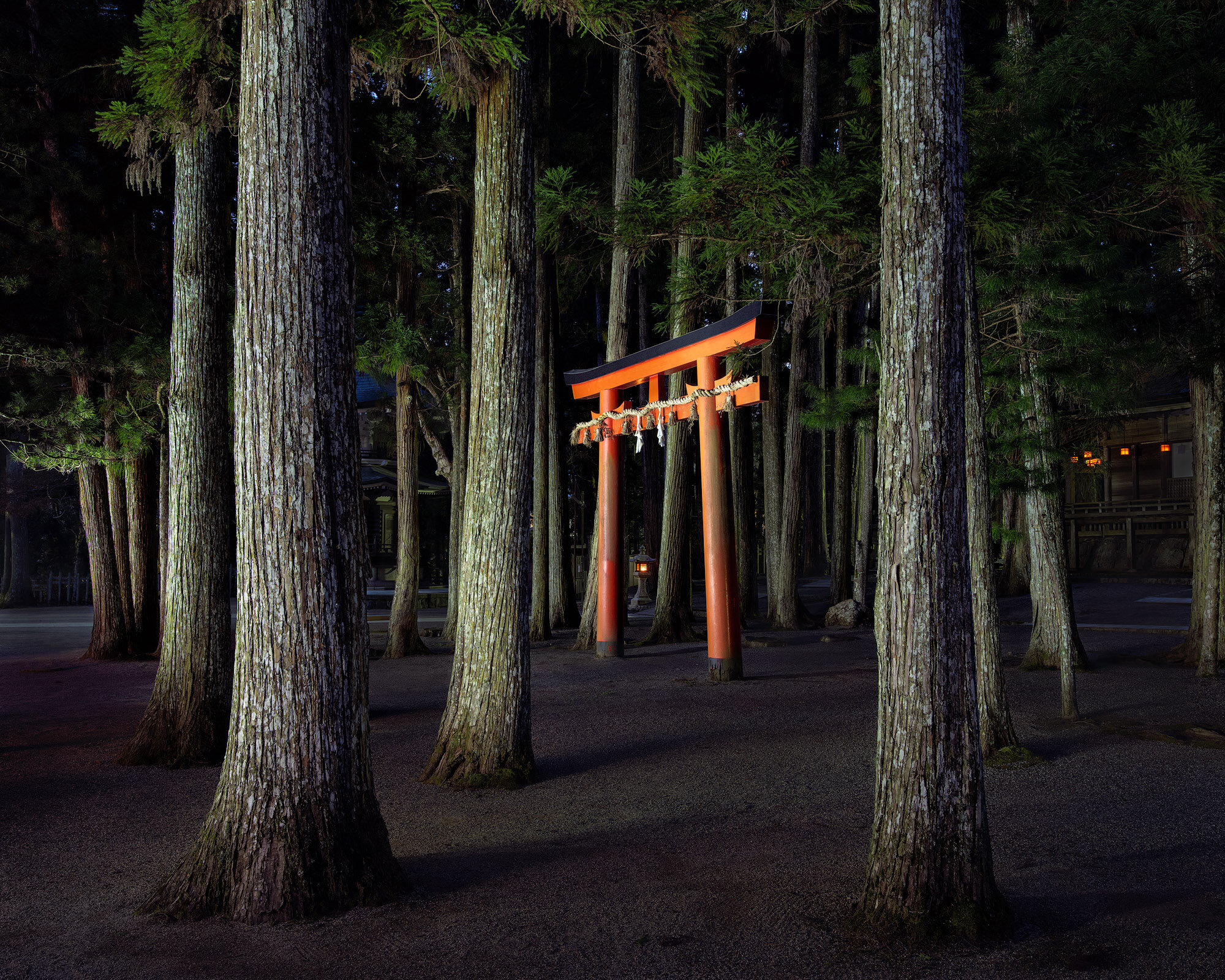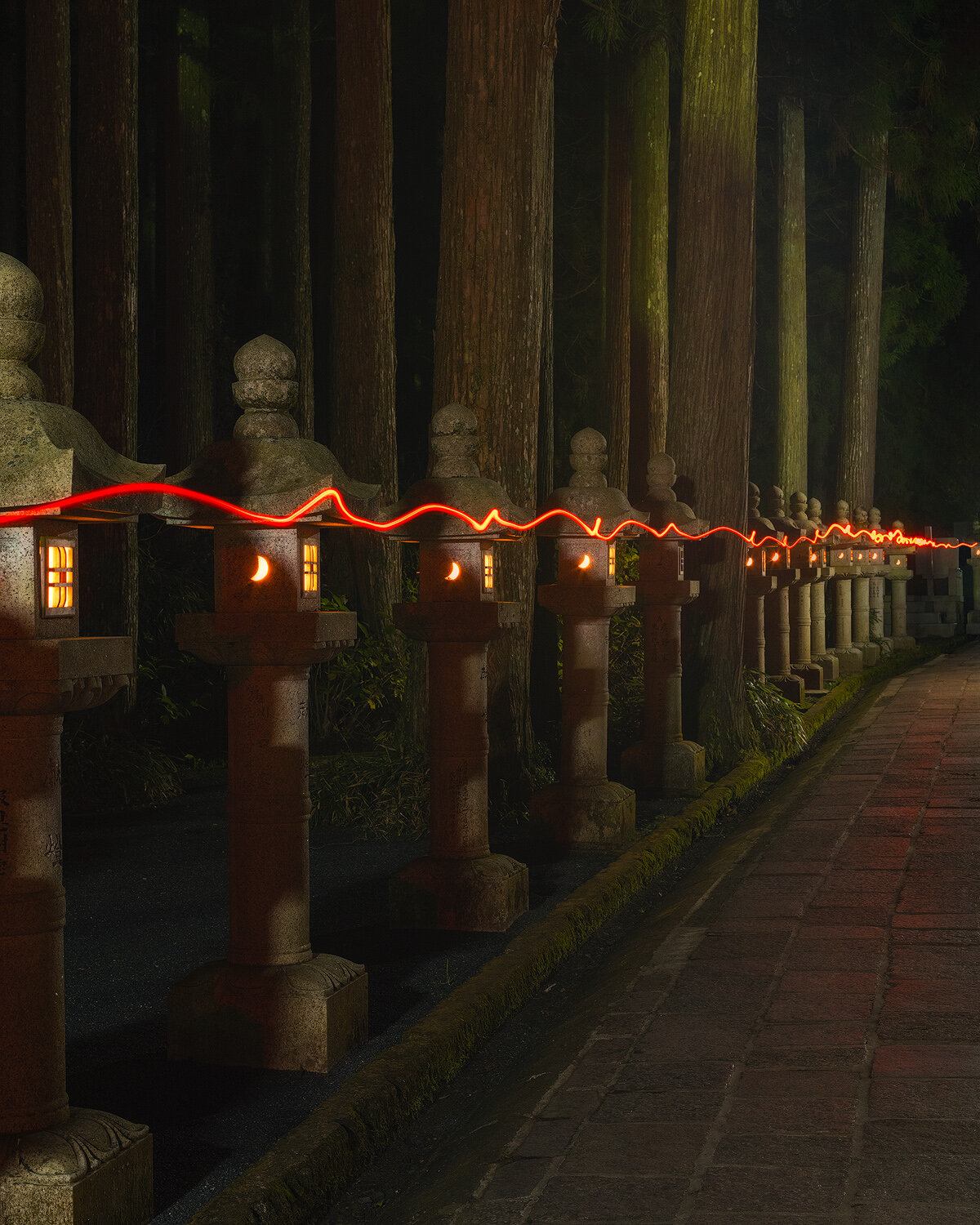
LIGHT AND SHADOWS IN MT. KOYA
I took my time ambling through countless temples, monasteries and other sacred grounds at Mt Koya. The deep, cold quiet of the night was my sole companion.
Earlier in the day, this mystic mountaintop town had been alive with chanting monks and satisfied pilgrims reaching their final destination. Now it was alive in a different way — pulsing with the kind of energy that only comes when a place is finally still.
The first image I committed to capturing that night was Night Torii. I had discovered this beautiful torii gate in the woods earlier, but the scene had felt too busy by daylight. As twilight faded away, I began to illuminate the torii and trees with my flashlight, allowing the rest of the scene to nestle into the darkness.
This approach allowed the red of the gate to stand out more strikingly against the shadows, better creating the depth and mood I was after.
Next, I ventured into the Okunoin Cemetery — 1.2 miles of stunning, honored grounds. Even in the dark of night, it didn’t feel eerie like other graveyards might. There was a lightness to the space. Perhaps that is because there are no actual bodies buried there. Instead, the stone mounds and ornate structures serve as memorials to those who have passed.
Samurai’s Gate captures one such memorial that honored a famed Samurai warlord named Mizuno Katsunari (1564-1651).
The sight of this gate, alone, drew me in, but I felt even more connected when I later learned the story behind it.
Mizuno Katsunari fought in many battles over the course of his life and his victories eventually earned him a castle. Mizuno then broadened his legacy by building up a town around the castle that would one-day become Fukuyama City.
I love that this humble gate memorializes such an illustrious figure. The trees on either side are strong and unwavering like the two great accomplishments of Mizuno’s life — both of which required a great deal of artistry.
The amount of time and energy Samurais dedicated to their craft is inspiring to me. It’s my goal to exhibit that same dedication in my own photographic journey. Perhaps that is why I intuitively felt compelled to delve deep into this composition and to keep working through the challenging shoot.
I introduced light-painting again when I captured Nightwalker — a rare self-portrait, of sorts. I started the exposure, walked down the path a ways while invisible to the camera, and then walked back toward the camera with my red headlamp on to create the streaking light pattern you see bouncing through the scene.
That magical looking line was exactly what was needed to bring the right energy into the image. Without it, you’d see the towering trees and unique path markers, but miss a certain specialness of environment.
This place resonated with me deeply. I was empowered by the spiritual energy collected in the tall trees and moss-covered stone pagodas.
Thousands of people wander through Mt. Koya every year to connect with something greater through meditation, prayer and internally connecting with departed souls. When they leave, they take some of that energy with them and leave the excess on the mountain for others to find.
That thought brings me a sort-of peace, not unlike the feeling I had walking around Okunoin Cemetery late at night — all alone besides the comforting spirits that wandered with me.
There is so much about that place that moves me, but I think maybe its truest mystery is the way it can seemingly hold the past and present in one breath.
That unique perspective is a powerful thing.




